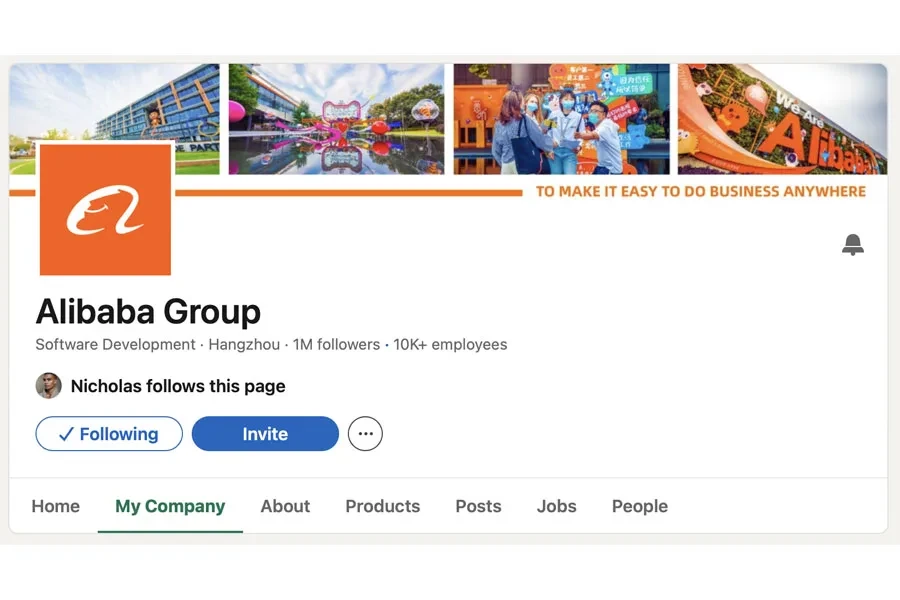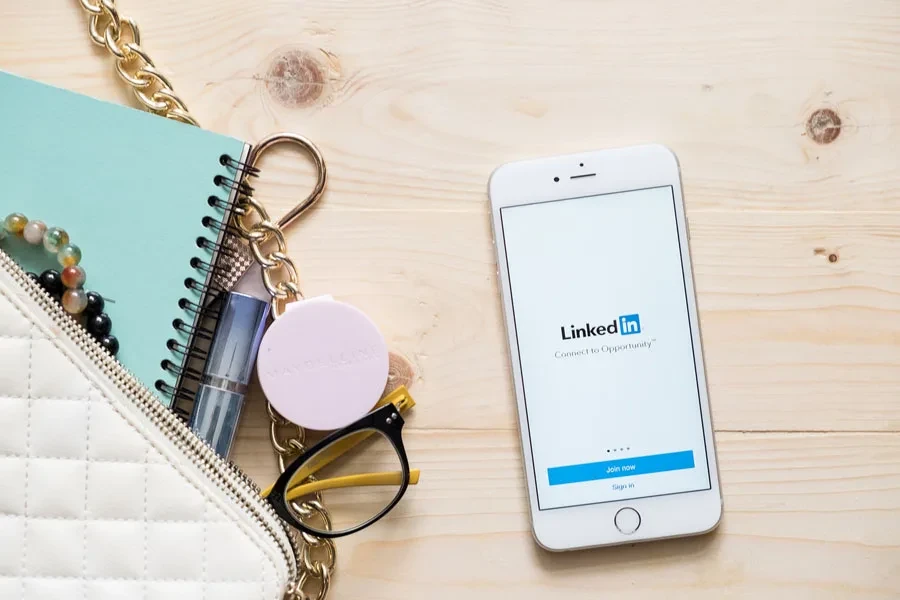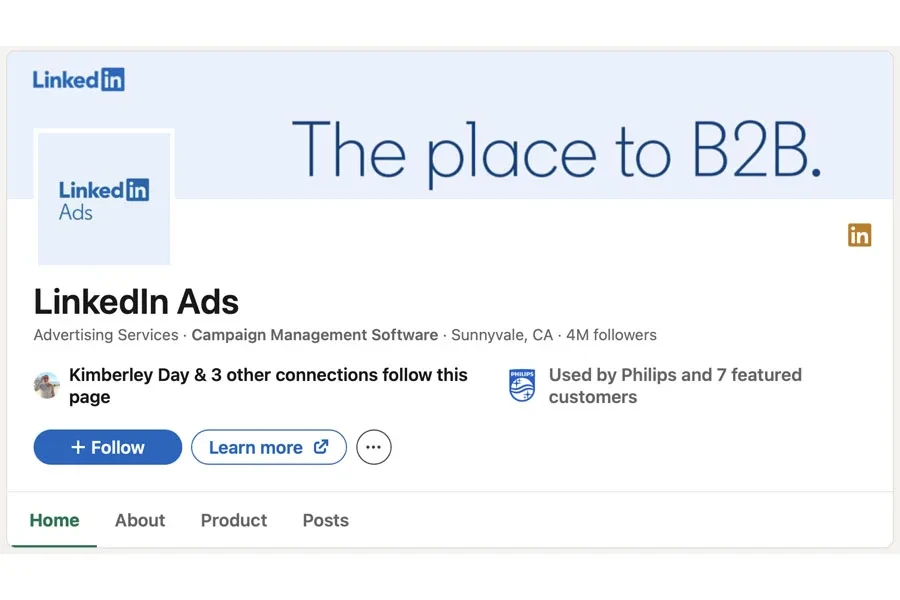Social media platforms play a crucial role in shaping business success. While platforms like Facebook, Instagram, and Twitter often steal the spotlight, LinkedIn continues to be a potent tool for businesses to expand their reach, establish authority, and drive sales.
Therefore, leveraging LinkedIn effectively can elevate your e-commerce business to new heights, connecting you with potential customers and industry leaders, and helping you to foster valuable partnerships.
Here, we’ll delve into how your business can harness the power of LinkedIn to drive growth.
Table of Contents
Advantages of using LinkedIn for business
Why using LinkedIn a good marketing strategy for e-commerce businesses
How to use LinkedIn for business growth
Building your LinkedIn marketing strategy
Advantages of using LinkedIn for business
LinkedIn offers a number of unique advantages to other social media platforms in several key ways, which can significantly impact the potential marketing strategy:
1. Professional networking focus
LinkedIn is primarily a platform for professional networking and career development, unlike platforms such as Facebook or Instagram, where users mainly engage with friends and family,
LinkedIn users are more focused on building business connections, seeking career opportunities, and accessing industry-related content. Therefore, businesses on LinkedIn can engage with a more professionally oriented audience, including decision-makers, industry influencers, and potential business partners.
2. Business-centric content
Content shared on LinkedIn tends to be more business-centric and professional. While platforms like Instagram may prioritize visually appealing and lifestyle-oriented content, LinkedIn users are more interested in industry news, thought leadership articles, professional insights, and business-related updates.
As a result, businesses leveraging LinkedIn for marketing purposes should tailor their content to align with the platform’s professional context, focusing on topics relevant to their industry, expertise, and target audience’s professional interests.
3. Thought leadership opportunities
LinkedIn provides a powerful platform for businesses to establish thought leadership and industry authority. By sharing valuable insights, expertise, and original content, businesses can position themselves as leaders in their respective fields, earning the trust and respect of their audience.
Thought leadership content such as articles, whitepapers, case studies, and expert opinions can help businesses showcase their knowledge, innovation, and industry insights, ultimately driving brand credibility and customer trust.
4. Targeted advertising capabilities
LinkedIn offers sophisticated targeting capabilities that enable businesses to reach a highly specific audience based on professional attributes such as job title, industry, company size, seniority, and more. This level of granularity allows businesses to tailor their advertising campaigns to effectively reach decision-makers, influencers, and other key stakeholders within their target market.
Compared to other social media platforms, where targeting options may be more limited or based on demographic factors, LinkedIn’s professional targeting options offer unique opportunities for B2B marketers to reach their ideal audience.
5. Lead generation and networking opportunities
LinkedIn is a powerful platform for lead generation and networking. It facilitates direct engagement with potential clients, partners, and industry peers. Through features such as InMail, LinkedIn messaging, and group discussions, businesses can initiate conversations, nurture relationships, and identify new business opportunities.
Additionally, LinkedIn’s Company Pages provide a centralized hub for businesses to showcase their products, services, and company culture, attracting followers and generating leads directly on the platform.
Why using LinkedIn a good marketing strategy for e-commerce businesses
While LinkedIn may not be the primary platform for driving direct sales, having a presence on LinkedIn can still offer several benefits:
- Brand awareness and credibility: Maintaining a LinkedIn page allows e-commerce businesses to showcase their brand, products, and company culture to a professional audience. Regularly posting updates, sharing industry insights, and engaging with followers can help enhance brand awareness and credibility.
- Networking and partnerships: LinkedIn provides opportunities for e-commerce businesses to network with other professionals, potential partners, suppliers, and industry influencers. Building relationships with relevant stakeholders can lead to collaborations, partnerships, and business opportunities that contribute to growth.
- Thought leadership and content marketing: As mentioned, e-commerce businesses can use LinkedIn to establish thought leadership by sharing valuable content, such as industry trends, product guides, customer success stories, and expert insights. By positioning themselves as authorities in their niche, businesses can attract followers, engage their audience, and drive website traffic.
- Recruitment and talent acquisition: LinkedIn is a valuable platform for e-commerce businesses to recruit top talent, showcase job opportunities, and build their employer brand. E-commerce companies can use their LinkedIn page to highlight company culture, employee testimonials, and career development opportunities, attracting qualified candidates to join their team.
By leveraging LinkedIn’s unique features and tailoring their approach to the platform’s professional context, businesses can enhance their online presence, engage with relevant stakeholders, and drive business growth.
How to use LinkedIn for business: Step-by-step guide for getting started
Before thinking about marketing strategies for LinkedIn, there are a few things you need to do to get started:
1. Optimize your company page

The first step to effectively using LinkedIn for your business is to create a compelling LinkedIn page. Think of your LinkedIn profile as your digital storefront, a place where potential customers and partners can learn about your brand and offerings.
If you haven’t already, create a company page (this differs from a typical page an individual professional would have on LinkedIn).
Here are some key tips to optimize your profile:
- Professional branding: Ensure your profile reflects your brand’s identity professionally. Use a high-quality logo as your profile picture and incorporate your brand colors into the background and content.
- Compelling summary: Craft a captivating summary highlighting your business’s unique value proposition, target audience, and achievements. This is your opportunity to make a memorable first impression.
- Keyword optimization: Incorporate relevant keywords related to your niche throughout your profile to improve visibility in LinkedIn search results.
2. Build your following
Once you have built a well-optimized and branded page for your business, you need to get it out there so people see and engage with it.
Start by sharing your page. An easy win is sharing the page with existing employees and asking them to follow. Additionally, you can ask them to edit their profiles and update their job descriptions to link back to the company page. You can also share the page with your existing network on LinkedIn.
Another great way to get followers is to add a follow button on your website.
Of course, the next step is sharing content for potential followers to engage with. But don’t just start posting randomly; take the time to build a marketing strategy for your LinkedIn.
Building your LinkedIn marketing strategy

Because LinkedIn is so different from other social media platforms, developing a specific strategy is essential.
Set goals
Before creating content for your LinkedIn strategy, it’s crucial to establish clear goals that align with your overall business objectives. Think about what you’d like to gain from having a LinkedIn marketing strategy, and this will help you determine the types of content you should post.
Here are some types of content that can help you achieve specific goals on LinkedIn:
- Brand awareness: Share company updates, product announcements, behind-the-scenes glimpses, and customer success stories to showcase your brand’s personality and values.
- Website traffic: Publish blog posts, articles, or infographics that provide valuable insights or solutions to your target audience’s pain points. Include clear calls to action directing users to visit your website for more information.
- Lead generation and sales: Promote exclusive discounts, special offers, or limited-time promotions to incentivize LinkedIn users to purchase or sign up for your mailing list. Use compelling visuals and persuasive copy to capture attention and drive conversions.
- Thought leadership: Write thought leadership articles, participate in industry discussions, or share expert opinions on relevant topics to demonstrate your expertise and contribute valuable insights to your industry.
- Networking and partnerships: Engage with influencers, thought leaders, and potential partners by commenting on their posts, sharing their content, and initiating conversations. Offer to collaborate on joint projects or events to expand your reach and build mutually beneficial relationships.
- Recruitment: Use your LinkedIn page to highlight company culture, employee testimonials, and job opportunities. Share updates about company milestones, awards, and recognition to attract top talent to your organization.
Leverage LinkedIn content for engagement
Content is king on LinkedIn, and businesses can leverage various content formats to effectively engage with their audience. Whether it’s informative articles, eye-catching visuals, or engaging videos, creating compelling content can help attract, educate, and convert potential customers.
Here’s how you can leverage different content types on LinkedIn:
- Informative articles: Share insightful articles related to your niche, such as industry trends, product guides, or success stories. Position yourself as a thought leader by providing valuable information that resonates with your target audience.
- Visual content: Visuals are powerful tools for capturing attention on LinkedIn’s feed. Create visually appealing graphics, infographics, or product images to showcase your offerings and entice potential customers.
- Video marketing: Embrace the rising trend of video content on LinkedIn by creating engaging videos highlighting your products, sharing customer testimonials, or providing behind-the-scenes glimpses of your operations.
Network strategically to expand your reach

LinkedIn is more than just a platform for sharing content – it’s a networking powerhouse that enables businesses to connect with potential customers, industry influencers, and strategic partners. Building a robust network on LinkedIn can open doors to new opportunities and facilitate business growth.
Here’s how you can network strategically on LinkedIn:
- Join relevant groups: Participate in LinkedIn groups related to your niche to connect with like-minded professionals, share insights, and engage in meaningful discussions.
- Connect with industry leaders: Identify key influencers and thought leaders in your industry and connect with them on LinkedIn. Engage with their content, share valuable insights, and build genuine relationships that could lead to collaborations or partnerships.
- Utilize advanced search: Leverage LinkedIn’s advanced search feature to identify potential customers, partners, or suppliers within your target demographic. Personalize your outreach messages to demonstrate genuine interest and value proposition.
Harness LinkedIn ads for targeted marketing

LinkedIn’s advertising platform offers powerful targeting capabilities that businesses can leverage to reach their ideal audience effectively. Whether you’re looking to drive website traffic, generate leads, or increase brand awareness, LinkedIn ads can help you achieve your marketing objectives.
- Targeted audience segmentation: Utilize LinkedIn’s targeting options to define your audience based on demographics, job titles, industries, interests, and more. Narrow down your audience to ensure your ads are seen by those most likely interested in your products or services.
- Dynamic ads: Experiment with dynamic ads to deliver personalized content experiences to your target audience. Showcase your products dynamically based on the user’s browsing history or interests, increasing the relevance and effectiveness of your ads.
- Sponsored content: Amplify your business’s reach by promoting your top-performing LinkedIn posts as sponsored content. Boost engagement, drive website traffic, and generate leads by targeting your sponsored content to relevant audiences.
Final thoughts
LinkedIn presents many opportunities for businesses to elevate their brand, expand their reach, and drive meaningful connections with customers and industry peers.
By optimizing your profile, creating compelling content, networking strategically, and leveraging LinkedIn ads, you can unlock the full potential of LinkedIn for your business success.
For more tips on how to get your business off the ground and thriving, browse hundreds of related articles on Alibaba.com Reads.



